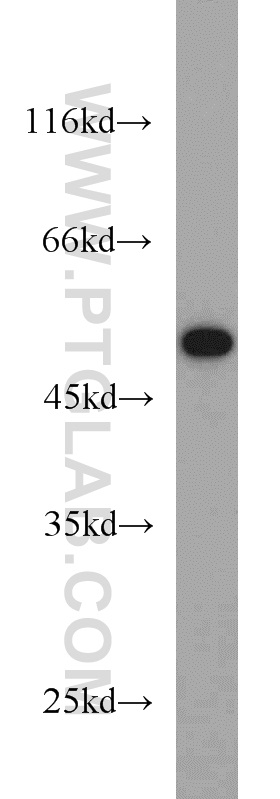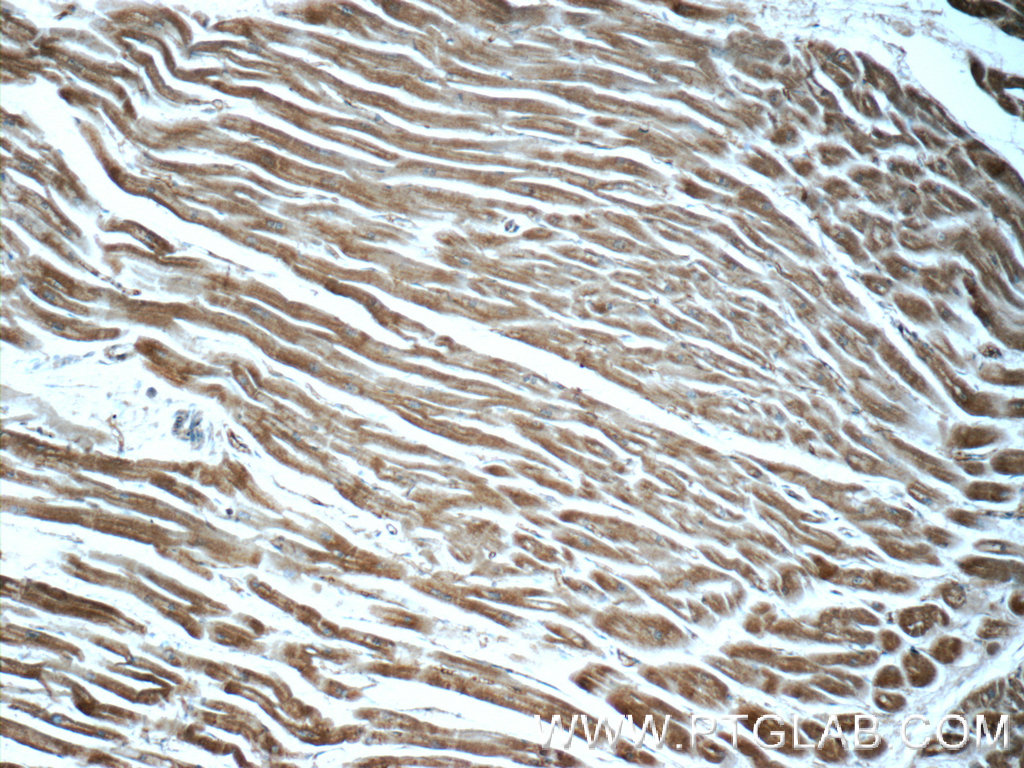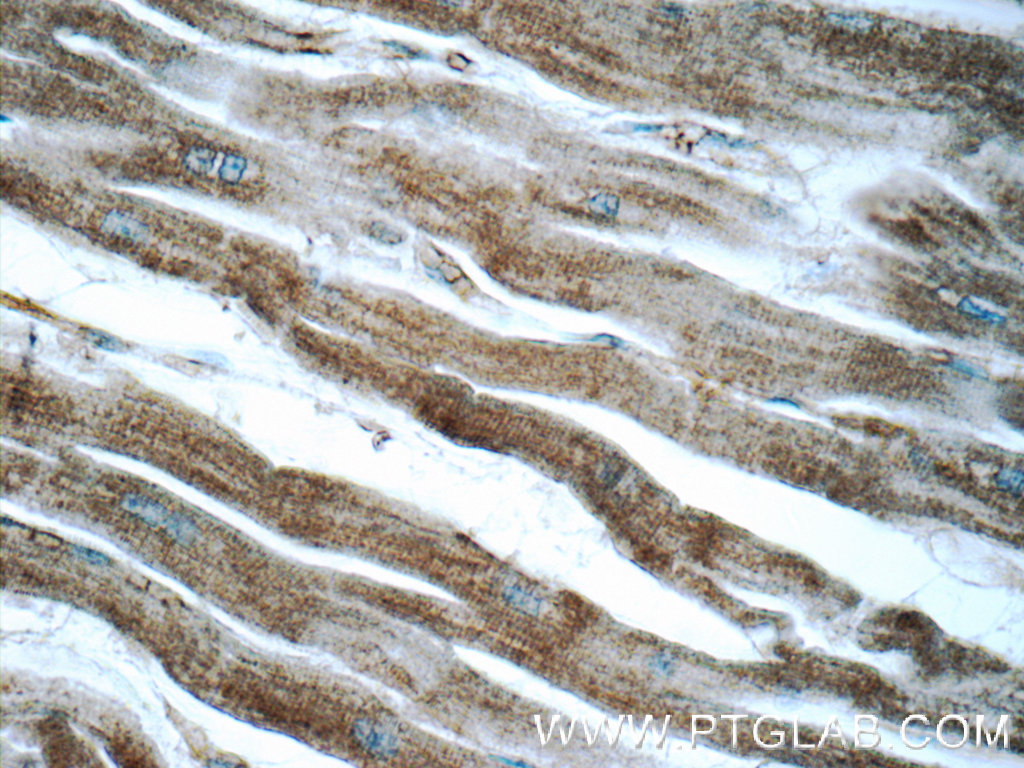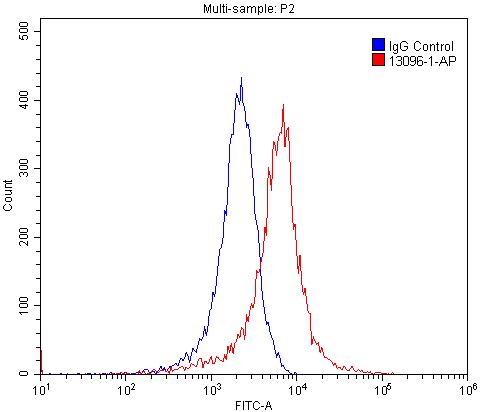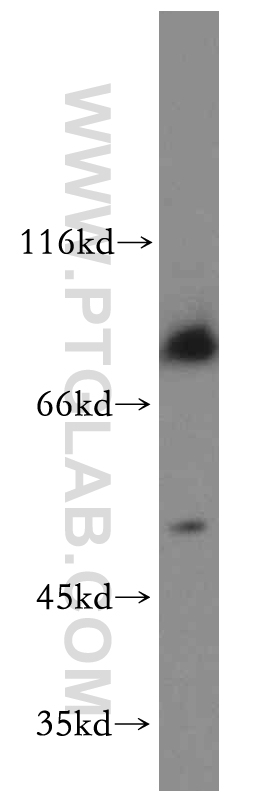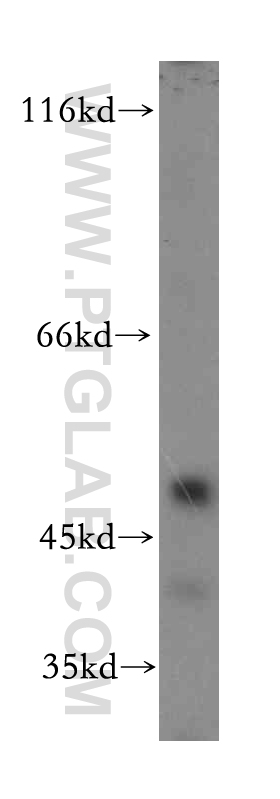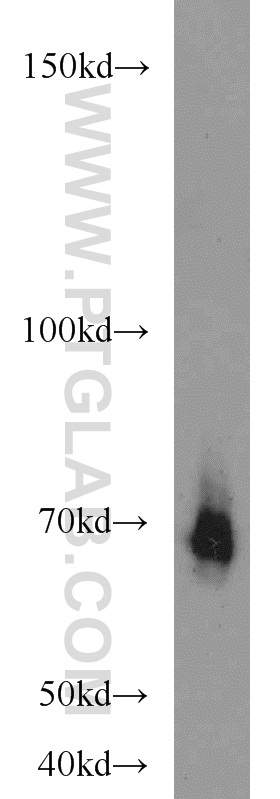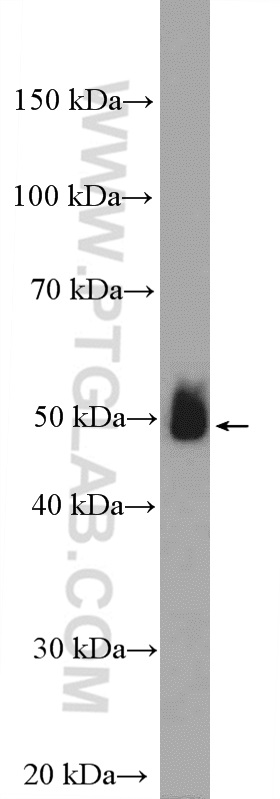- Featured Product
- KD/KO Validated
ADRB2 Polyclonal antibody
ADRB2 Polyclonal Antibody for FC, IHC, WB, ELISA
Host / Isotype
Rabbit / IgG
Reactivity
human, mouse, rat
Applications
FC, IHC, WB, ELISA and More (1)
Conjugate
Unconjugated
验证数据展示
经过测试的应用
| Positive WB detected in | mouse heart tissue, rat heart tissue |
| Positive IHC detected in | human heart tissue Note: suggested antigen retrieval with TE buffer pH 9.0; (*) Alternatively, antigen retrieval may be performed with citrate buffer pH 6.0 |
| Positive FC detected in | PC-3 cells |
推荐稀释比
| Application | Dilution |
|---|---|
| Western Blot (WB) | WB : 1:500-1:2000 |
| Immunohistochemistry (IHC) | IHC : 1:50-1:200 |
| Flow Cytometry (FC) | FC : 0.20 ug per 10^6 cells in a 100 µl suspension |
| It is recommended that this reagent should be titrated in each testing system to obtain optimal results. | |
| Sample-dependent, Check data in validation data gallery. | |
产品信息
13096-1-AP targets ADRB2 in WB, IHC, IF, FC, ELISA applications and shows reactivity with human, mouse, rat samples.
| Tested Applications | FC, IHC, WB, ELISA |
| Cited Applications | IF, IHC, WB |
| Tested Reactivity | human, mouse, rat |
| Cited Reactivity | human, mouse, rat |
| Immunogen | ADRB2 fusion protein Ag3715 种属同源性预测 |
| Host / Isotype | Rabbit / IgG |
| Class | Polyclonal |
| Type | Antibody |
| Full Name | adrenergic, beta-2-, receptor, surface |
| Synonyms | ADRB2, ADRB2R, ADRBR, B2AR, BAR, Beta 2 adrenergic receptor, Beta 2 adrenoceptor, Beta 2 adrenoreceptor, BETA2AR |
| Calculated Molecular Weight | 46 kDa |
| Observed Molecular Weight | 50-55 kDa |
| GenBank Accession Number | BC012481 |
| Gene Symbol | ADRB2 |
| Gene ID (NCBI) | 154 |
| RRID | AB_2225401 |
| Conjugate | Unconjugated |
| Form | Liquid |
| Purification Method | Antigen affinity purification |
| UNIPROT ID | P07550 |
| Storage Buffer | PBS with 0.02% sodium azide and 50% glycerol pH 7.3. |
| Storage Conditions | Store at -20°C. Stable for one year after shipment. Aliquoting is unnecessary for -20oC storage. |
背景介绍
实验方案
| Product Specific Protocols | |
|---|---|
| WB protocol for ADRB2 antibody 13096-1-AP | Download protocol |
| IHC protocol for ADRB2 antibody 13096-1-AP | Download protocol |
| FC protocol for ADRB2 antibody 13096-1-AP | Download protocol |
| Standard Protocols | |
|---|---|
| Click here to view our Standard Protocols |
发表文章
| Species | Application | Title |
|---|---|---|
Drug Des Devel Ther 10-Gingerol Enhances the Effect of Taxol in Triple-Negative Breast Cancer via Targeting ADRB2 Signaling
| ||
Proc Natl Acad Sci U S A Astrocytic β2-adrenergic receptors mediate hippocampal long-term memory consolidation. | ||
Diabetes Hepatokine ERAP1 Disturbs Skeletal Muscle Insulin Sensitivity via Inhibiting USP33-Mediated ADRB2 Deubiquitination. | ||
Mol Ther Nucleic Acids Translatome and Transcriptome Profiling of Hypoxic-Induced Rat Cardiomyocytes. | ||
Int J Mol Sci β-Adrenoceptor Activation in Breast MCF-10A Cells Induces a Pattern of Catecholamine Production Similar to that of Tumorigenic MCF-7 Cells. | ||
Sci Rep SMN deficiency causes pain hypersensitivity in a mild SMA mouse model through enhancing excitability of nociceptive dorsal root ganglion neurons. |
